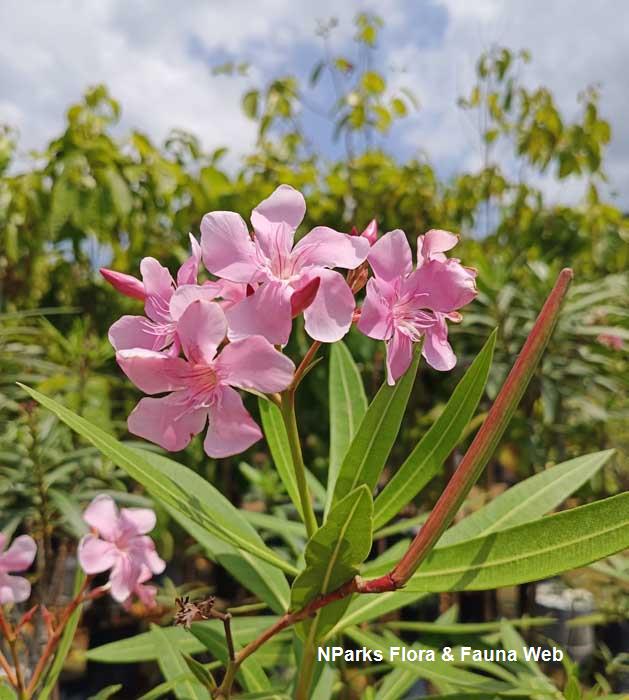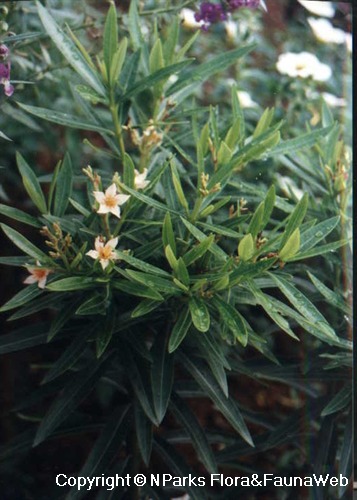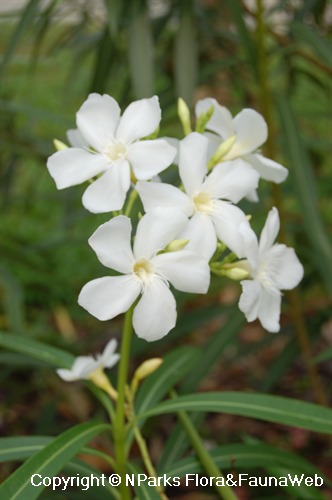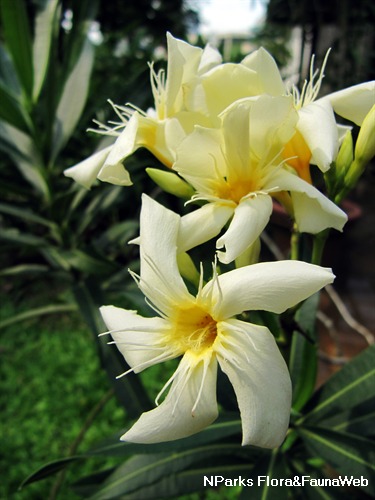
Name
Classifications and Characteristics
| Plant Growth Form | Shrub |
|---|---|
| Plant Shape | Shrubby |
| Maximum Height | 4 m |
Biogeography
| Native Distribution | Of horticultural origin |
|---|---|
| Preferred Climate Zone | Tropical, Sub-Tropical / Monsoonal, Mediterranean |
Description and Ethnobotany
| Growth Form | Shrub to 4m tall |
|---|---|
| Foliage | Leaves dark green, leathery, 5-10 (12)cm long by1-1.5cm wide, lanceolate - narrow elliptic. |
| Flowers | Flowers fragrant, petals very pale yellow to cream, throat dull yellow. |
| Ethnobotanical Uses | Medicinal: This species is very toxic and cannot be consumed under any circumstances. As such, medicinal uses are limited to external applications only, e.g. an oil derived from the roots is being used to treat leprosy and other skin diseases. |
Landscaping Features
| Desirable Plant Features | Ornamental Flowers |
|---|---|
| Landscape Uses | Parks & Gardens, Small Gardens, Coastal, Flowerbed / Border, Container Planting |
| Thematic Landscaping | Golden Garden |
| Usage Hazard - Cons | Toxic Upon Ingestion, Irritant - Contact Allergy, Irritant - Sap |
Fauna, Pollination and Dispersal
| Pollination Method(s) | Biotic (Fauna) |
|---|---|
| Seed or Spore Dispersal | Abiotic |
Plant Care and Propagation
| Light Preference | Full Sun |
|---|---|
| Water Preference | Moderate Water, Little Water |
| Rootzone Tolerance | Drought Tolerant, Well-Drained Soils, Fertile Loamy Soils, Easy to Grow |
| Planting Remarks | Able to tolerate salt spray |
| Pest(s) | Sucking Insects |
| Propagation Method | Seed, Stem Cutting |
Foliar
| Foliage Retention | Evergreen |
|---|---|
| Mature Foliage Colour(s) | Green |
| Mature Foliage Texture(s) | Leathery |
Floral (Angiosperm)
| Flower Colour(s) | Cream / Off-White, Yellow / Golden |
|---|---|
| Flower Texture(s) | Leathery |
| Flower Grouping | Cluster / Inflorescence |
Image Repository
Others
| Master ID | 31859 |
|---|---|
| Species ID | 6260 |
| Flora Disclaimer | The information in this website has been compiled from reliable sources, such as reference works on medicinal plants. It is not a substitute for medical advice or treatment and NParks does not purport to provide any medical advice. Readers should always consult his/her physician before using or consuming a plant for medicinal purposes. |

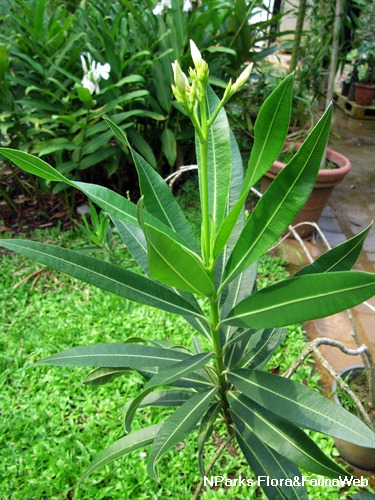
.jpg)
